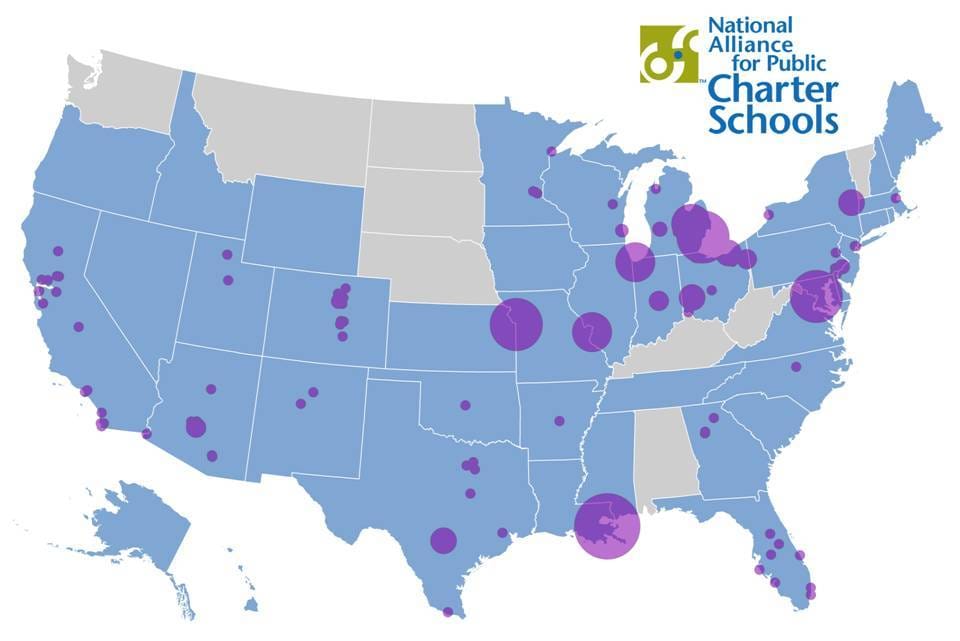The most misleading statistic in American education is the fact that just 4 percent of American children attend charter schools. A blip, this is! A rounding error! Totally insignificant!
What the national figure hides is the immense variation in charter school “market share” (or “penetration,” if you prefer) in cities around the nation—ranging from 0 percent in Seattle to 76 percent in New Orleans.
But a picture is worth a thousand words. Here, courtesy of a recent report from the National Alliance for Public Charter Schools, is charter-school enrollment as a percentage of total public school enrollment, calculated by district. (The bigger the dot, the bigger the charter-school market share.)
 Charter-school market share: The bigger the dot, the larger the percentage of charter enrollment. Data from NAPCS study. |
A few things are noteworthy:
- At least when it comes to market share, charter schools are only a big deal in the Eastern half of the country. That’s surprising, as so much of the “entrepreneurial” charter-school energy comes from the West Coast. California, Arizona, and Texas may have big numbers of charter students, but they are dwarfed by even larger student populations overall.
- The Rust Belt is Ground Zero for charter-school competition. Notice the large, overlapping blobs for Cleveland, Detroit, Flint, Toledo, and Youngstown. What is it about car country that seems to attract charter schools? Surprisingly, considering the region’s labor history, Michigan and Ohio are among the friendliest states for charter start-ups, especially those run by for-profit chains. It shows.
- Not unexpectedly, it’s harder to get to “scale” in huge cities than in mid-sized ones. New York, L.A., and Chicago* are nowhere compared to Kansas City, Cleveland, and New Orleans.
That’s what I see; what about you? The comments section is open.
* That dot you see on Lake Michigan is Gary, Indiana, not Chicago.
